
scrounge: /skrounj/ informal verb: to actively seek [books] from any available source
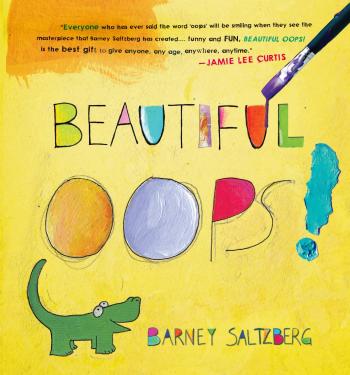
Beautiful Oops! is a board book with bright colors, flaps to open, and other fun features, which communicates the idea that when being creative it's okay to mess up. Rather than coming right out and saying "It's okay to mess up" though, the book gives examples of how seeming mistakes or imperfections can be used as a starting point to create something wonderful.
Whether it's a stain from a coffee mug, a tear in paper, a smudge of paint, of even a wadded up piece of paper, everything has potential if you choose to see it that way. This book's mixed media images and interactive features work well together to help children view their art in a more positive way (in the tradition of Peter Reynolds' Creatrilogy), as something with potential rather than simply a rote task with only one possible outcome. A fun book for young kids, and possibly older ones as well! (Some of the elements in the book might not work out well with toddlers who don't yet know how to treat books "gently," so parents may want to play it by ear.)
Scrounged From: Amazon (a Christmas present for our five-year-old)
Format: Board book
Author/Illustrator: Barney Saltzberg
Pages: 28
Content Advisory: None
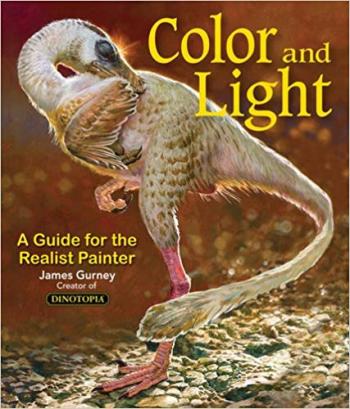
Book Scrounger's note: The following is a guest review by Doug, a.k.a. Professor Puzzler.
Color and Light was a Christmas gift Book Scrounger gave me this year. Now it's two days later, and I've already finished reading it, but I intend to keep it close at hand for a long time, because it is a fantastic reference work for artists, and it has plenty of beautiful paintings to study and learn from.
This book was written by James Gurney, the creator of Dinotopia. Dinotopia is a fantasy land in which humans co-exist with intelligent dinosaurs. It has been described as a fully-imagined world on par with Tolkien's Middle Earth. I've never read Dinotopia, but Gurney's artwork is beautiful. He describes himself as an "Imaginative Realist."
As someone who is interested in both art and science, I found this book fascinating and informative. Gurney doesn't just talk through how to draw a rainbow -- he explains why rainbows exist, and how they relate to the position of the sun and the antisolar point. What? You don't know what the antisolar point is? I guess you'd better read this book!
Seriously, maybe you're wondering why you need to know the science behind rainbows, or shadows, or reflections in the water. Aside from the fact that these things are interesting, they're also very valuable if you're painting something from your imagination. If you're going to paint a rainbow in an imagined scene, you must understand how rainbows work, or you won't be able to position the rainbow correctly relative to the horizon, the sun, and the cast shadows all around. And if you can't do that, you can't make a picture look realistic. People will always look at your artwork and think, "Something's not quite right..."
Aside from the informative text, this book is filled with beautiful artwork. It begins with some of the traditional "masters," but then moves on to Gurney's own work. He includes some plein-air paintings, as well as many of his imaginative paintings involving dinosaurs and other creatures. Most of the pictures are oil paintings or watercolor paintings, but there is very little in the book that is specific to any particular medium, so if you use acrylics, colored pencils, or other media, this book will still be valuable.
I just discovered that Gurney also wrote a book titled Imaginative Realism: How to Paint What Doesn't Exist. Ah, well...I guess I've got a birthday coming up in a few months...
Scrounged From: Amazon
Format: Paperback
Author: James Gurney
Illustrator: James Gurney
Pages: 224
Content Advisory: Realistic artwork involving dinosaurs and some "creepy" creatures.
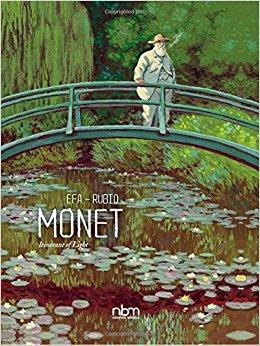
I know very little about "the art world," so I came to Monet: Itinerant of Light as something of a dunce, but I at least knew his name and knew he painted some of those pictures that were sometimes blurry or foggy-looking (my "artsy vocabulary" is obviously limited as well). But this book helped remind me of the little I had heard -- "impressionist" is the word for his style.
This is a graphic novel that covers the earlier (and more difficult) parts of his career, as well as his personal life at the time. I really liked the art -- the end of the novel explains how some of Monet's paintings were portrayed/given tribute to here, none of which I recognized (see the "dunce" comment earlier), but the illustrations were soft and detailed, with realistic facial expressions, and didn't feel "cartoony" to me at all (the way some graphic novels do).
As to the story itself, it's quite fascinating, though equally inspiring and heartbreaking. We see, over and over again, Monet's unwilllingness to compromise on his artistic vision for the sake of the "academics" of the day, and also his drive to be nothing but a painter and to master his craft -- paired with an irresponsibility with money which led to some fairly dire poverty at times. I also felt so bad for Camille, his wife, with the state of women's healthcare in those days (especially for those in poverty).
The framing of the story begins and ends with him as an old man, and so a large portion of his life is simply skimmed over at the end. I'm not an artist so I don't understand the artistic drive, but I still enjoyed reading about such a famous painter of the past, and his contributions to art.
(Thanks to NetGalley for the review copy.)
Scrounged From: NetGalley
Format: Kindle
Author: Salva Rubio
Illustrator: Efa
Pages: 112
Content Advisory: A couple swear words, some nudes, one "bedroom scene" frame without nudity, and some thematic elements are mentioned/shown including drinking, an affair, abortion, a death, and extreme poverty. I'd give the book a PG-13 rating if it was a movie.
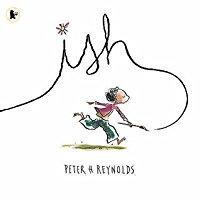
I still remember the first time it was pointed out to me that the things I drew did not even come close to looking like what I had intended them to portray. This was absolutely meant to be a helpful observation, but for many children, whether they are told so directly or figure it out for themselves that their drawings do not look "realistic," it is the beginning of the end of drawing for them.
Why? One idea I've been told is that children's spatial perception often shifts in the later elementary years, and this causes them to begin doubting their abilities, perhaps even involving some feelings of shame once they compare their drawings to the way things "actually" look. If this is true, it is not surprising that it could have a very strong effect on one's desire to be creative, even beyond simply putting pen to paper.
This book, called Ish, is a part of Peter Reynolds' "Creatrilogy," which aims to encourage children to remain creative even when things may happen that cause them to doubt themselves.
In this story, a boy named Ramon is drawing when his older brother comes over and laughs at one of his drawings. After much frustration with trying to get things to look "right," Ramon declares that he is done. Fortunately for him, there is someone who likes his drawings as they are, and encourages him to aim for "ish" instead of perfection.
I don't think this parable is just for budding artists, but for anyone who has become so focused on perfection that they are unwilling to take the risk of something not turning out right. I hope that children who see themselves in Ramon's predicament will find permission to explore the "ish" of the many different ways to portray the world around us artistically.
As a lifelong attempting-to-recover perfectionist, I may say "I got this for my kid," which is true, but it's a lesson I need to learn as well. As I try to push myself to create more often, I want to remember this book when I get stuck or feel like something I made just didn't turn out "right."
For a story about a girl who's convinced she "just can't draw," see The Dot, also by Peter Reynolds. And if you've ever wondered what is the "correct" color to paint the sky, check out Sky Color to round out the trilogy.
Scrounged From: Amazon (a birthday present for our four-year-old)
Format: Hardcover
Author/Illustrator: Peter Reynolds
Pages: 32
Content Advisory: None
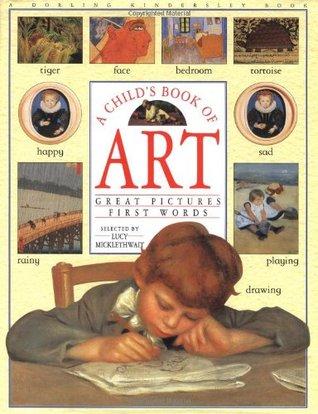
A Child's Book of Art helps introduce young children to art history, or even just art in general, using relatable categories such as pets, family, outdoors, etc. This is one of the largest books we have, and so the pictures are big and easy for children to inspect carefully if they feel like it.
Each category includes several paintings from a large range of time periods and painters. Art history can also become a discussion about history in general, as children get to see portraits of children their age dressed very differently!
Even though I'm not much of an "art person," I still enjoy reading this book with my kids. I recognized a name here and there, and maybe even learned something myself.
Scrounged From: AbeBooks.com
Format: Hardcover
Author: Lucy Micklethwait
Pages: 64
Content Advisory: Fairly clean for art history, but some barely noticable nudity in a couple places.

